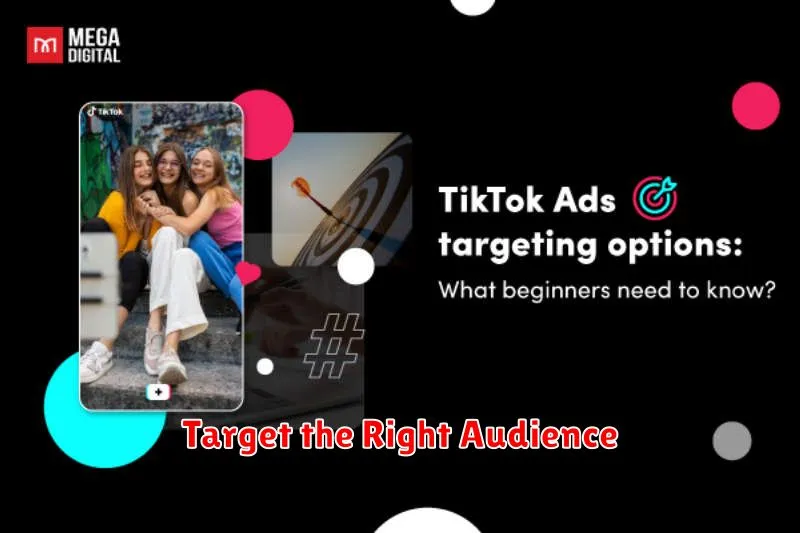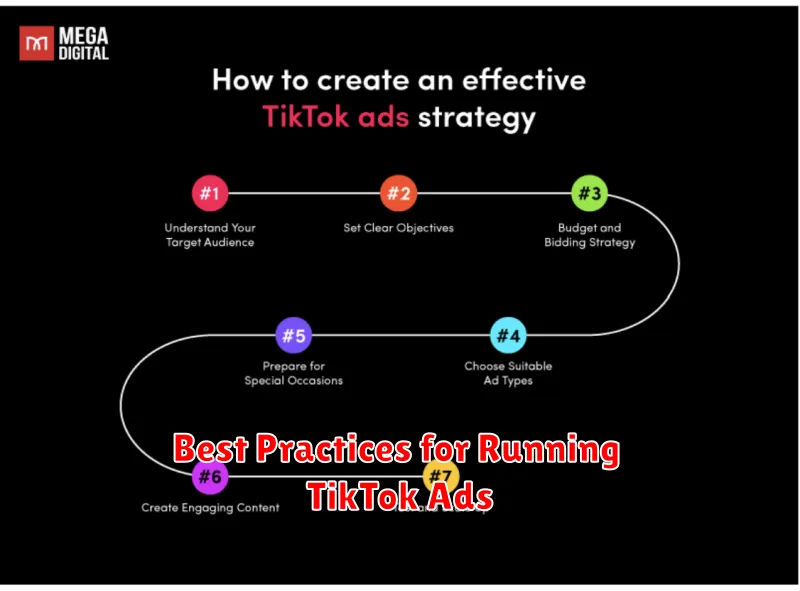TikTok has rapidly evolved from a platform for short-form entertainment to a powerful marketing tool for businesses of all sizes. Running TikTok Ads effectively can significantly expand your reach, engage a younger demographic, and drive conversions. This article explores best practices for running TikTok Ads, covering key strategies from campaign setup and targeting to creative development and performance analysis. Understanding these TikTok Ads best practices is crucial for maximizing your return on investment and achieving your marketing objectives on this dynamic platform. Whether you’re a seasoned marketer or just starting out with TikTok advertising, this guide will provide valuable insights to optimize your campaigns.
Successfully navigating the TikTok Ads landscape requires a strategic approach. This article will delve into the intricacies of crafting compelling TikTok ad creatives, effectively targeting your desired audience, and leveraging TikTok Ads Manager for campaign optimization. We’ll explore how to define clear objectives, choose the right ad format for your goals, and track key performance indicators (KPIs) to ensure your TikTok Ads strategy is delivering results. By implementing these best practices, you can unlock the full potential of TikTok Ads and drive meaningful business growth.
Why Use TikTok for Advertising
TikTok presents a unique and powerful advertising opportunity for businesses of all sizes. Its massive and highly engaged user base offers significant potential reach, particularly among younger demographics. This platform allows you to connect with your target audience in a dynamic and creative way.
TikTok’s algorithm is designed to promote organic discovery, meaning your ads have a higher chance of being seen by users who are genuinely interested in your content. This contrasts with more traditional platforms where users may actively try to avoid advertisements. Further strengthening its advertising potential is TikTok’s emphasis on short-form video content. This format captures attention effectively and encourages rapid consumption of information, leading to increased brand awareness and recall.
Beyond reach and engagement, TikTok offers a suite of robust advertising tools. These tools allow for precise targeting, ensuring your ads are delivered to the most relevant audience segments. From demographic targeting to interest-based targeting, you can tailor your campaigns to maximize their impact. Coupled with the platform’s focus on user-generated content and trending challenges, TikTok provides a fertile ground for creative advertising strategies that resonate with its user base.
Know the TikTok Ad Formats
Understanding the various ad formats available on TikTok is crucial for creating a successful advertising campaign. Choosing the right format depends on your campaign goals and target audience.
Common TikTok Ad Formats:
In-Feed Ads: These ads appear organically within users’ “For You” page feeds. They are full-screen, sound-on, and can be up to 60 seconds long, though shorter videos are often recommended.
Brand Takeover: This format allows brands to take over the entire screen for a few seconds when a user opens the app. It provides high impact but is a premium option.
TopView: Similar to Brand Takeover, TopView ads appear at the top of the “For You” page, but they are not full-screen initially. They seamlessly transition into an in-feed video ad.
Branded Hashtag Challenge: These campaigns encourage user-generated content by inviting TikTokers to participate in a challenge using a branded hashtag. This format is great for brand awareness and engagement.
Branded Effects: Create custom AR filters and stickers that users can incorporate into their own videos. This is a fun and interactive way to increase brand visibility and engagement.
Set Up TikTok Ads Manager
Before launching your TikTok ad campaigns, you must first set up your TikTok Ads Manager account. This is a crucial step in managing and optimizing your advertising efforts on the platform.
To begin, create a TikTok Ads Manager account. You’ll need to provide some basic business information. Once your account is created, familiarize yourself with the dashboard. This is where you’ll manage all aspects of your campaigns, from budgeting and targeting to performance monitoring and reporting.
Next, link your TikTok account. If you don’t have one already, you’ll need to create a TikTok business account to connect to your Ads Manager.
Finally, set up your payment method. Accurate payment information is essential to ensure your ads run smoothly without interruption. Once these steps are complete, you can begin building your TikTok ad campaigns.
Target the Right Audience

Targeting the right audience is crucial for TikTok ad campaign success. A precisely targeted campaign ensures your ads are seen by users most likely to engage with your content and ultimately convert into customers.
TikTok offers robust targeting options to help you refine your audience. You can target based on:
- Demographics: Age, gender, language, and location allow you to reach specific user groups.
- Interests: Target users based on their indicated interests and in-app activity.
- Behaviors: Reach users who have interacted with specific content or accounts.
- Custom Audiences: Upload customer data to target existing customers or leads.
- Lookalike Audiences: Expand your reach by targeting users similar to your existing customer base.
Careful consideration of your target audience is essential. Analyze your ideal customer profile and utilize TikTok’s targeting options to reach the users who best align with your brand.
Create Authentic-Looking Content
TikTok users value authenticity. Ads that feel forced or overly polished often underperform. Focus on creating content that feels native to the platform.
Embrace trends. Leveraging trending sounds, hashtags, and challenges can significantly increase visibility and engagement. Be sure the trend aligns with your brand and target audience.
Show, don’t just tell. Visual storytelling is key on TikTok. Use compelling visuals and concise messaging to capture attention quickly.
Encourage interaction. Ask questions, run polls, and respond to comments to foster a sense of community and boost engagement.
User-generated content (UGC) can be extremely effective. Partnering with creators adds credibility and resonates with the TikTok community.
Use Music and Trends Effectively
Music is a crucial element of TikTok. Selecting trending or popular music can significantly increase the visibility and engagement of your ads. Leveraging trending audio allows your ad to reach a wider audience already engaged with that sound.
Trends on TikTok evolve rapidly. Staying current with trending hashtags, challenges, and dances can greatly enhance your ad’s relevance. Participating in relevant trends can make your ad feel more organic and less like a traditional advertisement, increasing user engagement.
Combining music and trends is a powerful strategy. Choose trending music that aligns with a current trend or challenge. This synergistic approach can significantly boost your ad’s performance.
Originality matters. While using trends is essential, consider putting a unique spin on them. This helps your ad stand out from the competition and can increase shareability.
Track Engagement and Conversions
Tracking key metrics is crucial for optimizing your TikTok ad campaigns. Monitor engagement metrics such as likes, comments, shares, and video views to understand how your audience interacts with your content. High engagement often indicates resonant content, while low engagement may signal a need for adjustments.
Beyond engagement, focus on conversion tracking. Define your desired conversion goals, whether it’s website visits, app downloads, or purchases. Implement the TikTok Pixel to accurately track conversions and attribute them to specific ad campaigns. This data provides valuable insights into which ads are driving the most valuable actions.
Regularly analyze your campaign performance using the TikTok Ads Manager. Identify trends, top-performing ads, and areas for improvement. Use A/B testing to experiment with different creative elements, targeting options, and bidding strategies to continuously optimize your campaigns and maximize your return on investment.

